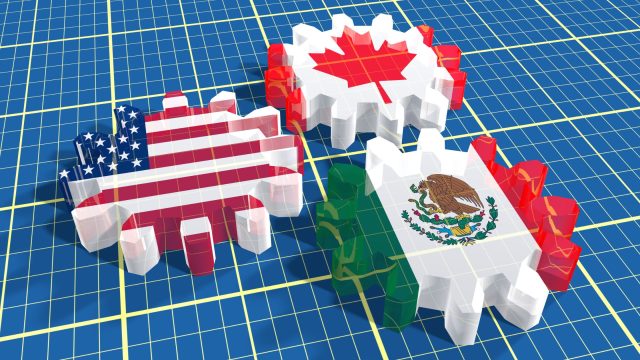The State of the Union Address serves as a barometer for the nation’s current challenges and future direction. Donald Trump’s 2025 address to Congress focused heavily on economic nationalism, border security, global leadership, and preserving conservative social values. While many of his policy proposals are aligned with traditional right-wing priorities, they also highlight the need for adaptability in governance, economic strategy, and social structures—which can be evaluated using the Human Adaptability and Potential Index (HAPI).
The HAPI framework is a multidimensional model that assesses human adaptability across five critical domains:
- Cognitive Adaptability – Problem-solving, learning agility, and strategic thinking.
- Emotional Adaptability – Resilience in the face of uncertainty.
- Behavioral Adaptability – Ability to adjust habits and routines.
- Social Adaptability – Capacity to collaborate across diverse environments.
- Growth Potential – Long-term ability to thrive in changing conditions.
Applying these categories to Trump’s speech reveals how adaptable (or rigid) U.S. policies are in addressing domestic and global challenges.
1. Economic Policy: “America First” and Industrial Revival – A Deep HAPI Analysis
Trump’s economic policy is centered on an America First approach that emphasizes:
- Repatriating manufacturing jobs by enforcing tariffs, renegotiating trade deals, and encouraging domestic production.
- Expanding fossil fuel production (oil, gas, coal) while reducing investments in green energy.
- Lowering corporate taxes and cutting regulations to promote business growth.
- Reducing reliance on foreign supply chains, particularly from China.
- Strengthening tariffs and trade barriers to promote American-made goods.
- Prioritizing traditional industries (manufacturing, steel, automotive, energy) over emerging sectors (AI, biotech, and digital services).
This approach aligns with Trump’s economic nationalism doctrine, which assumes that economic prosperity is best achieved through domestic self-sufficiency, trade protectionism, and deregulation.
HAPI Framework Evaluation
The Human Adaptability and Potential Index (HAPI) evaluates policies across five key dimensions to determine their adaptability and sustainability. Let’s assess Trump’s economic policy through each benchmark.
1. Cognitive Adaptability (6/10)
Cognitive adaptability measures how well a policy anticipates and responds to economic changes, innovation, and shifting global dynamics.
Strengths:
✅ Recognizes the need for stronger supply chain resilience – Trump correctly identifies U.S. reliance on foreign production (especially from China) as a vulnerability, particularly after COVID-19 exposed weaknesses in global supply chains. His push for “Made in America” aligns with current trends where countries are reconsidering overdependence on globalized production.
✅ Addresses job loss concerns in industrial sectors – Manufacturing job losses in the U.S. have been a major issue for blue-collar workers, particularly in the Midwest and Rust Belt. Policies focused on domestic production could help rebuild local economies in struggling regions.
Weaknesses:
❌ Fails to acknowledge the growing dominance of automation and AI – While reshoring manufacturing can create jobs in the short term, it does not guarantee long-term employment growth. Automation and robotics will replace many industrial jobs, requiring a focus on reskilling rather than simply relocating production.
❌ Ignores high-value industries of the future – The policy focuses too much on traditional industries (steel, coal, auto, oil) and not enough on future-ready sectors such as AI, biotech, clean energy, and advanced manufacturing. Without investments in cutting-edge industries, the U.S. risks lagging behind China and the EU in technology and innovation.
Final Score: 6/10 ✅ Recognizes economic vulnerabilities but lacks innovation-driven economic adaptability.
2. Emotional Adaptability (5/10)
Emotional adaptability measures how well a policy addresses economic anxiety, workforce transitions, and societal shifts.
Strengths:
✅ Reassures working-class Americans – Many manufacturing workers, miners, and energy-sector employees have seen their industries shrink. This policy provides a sense of economic security and stability to these groups.
✅ Positions U.S. economic policy as self-reliant – The emphasis on independence from foreign economies taps into a sense of national pride and self-sufficiency, which can strengthen consumer and business confidence.
Weaknesses:
❌ Fails to account for the workforce stress of automation-driven job loss – A “manufacturing comeback” may not prevent mass layoffs if automation replaces human labor. Without reskilling efforts, workers will face long-term job insecurity.
❌ Ignores economic reality of consumer pricing – Protectionist policies and tariffs can increase prices for American consumers, particularly on imported goods like electronics and vehicles. The impact of inflation on middle- and lower-income families is not fully addressed.
Final Score: 5/10 ✅ Provides emotional security for workers but overlooks future job disruptions and rising costs.
3. Behavioral Adaptability (5/10)
Behavioral adaptability measures how well a policy adjusts to economic shifts and embraces necessary reforms.
Strengths:
✅ Immediate, strong action on trade and tax reforms – The policy is aggressive in its implementation, with clear steps to alter trade deals, enforce tariffs, and incentivize domestic production.
✅ Promotes domestic business growth – By reducing regulations and corporate taxes, Trump’s policy encourages investment and expansion in U.S.-based industries.
Weaknesses:
❌ Relies too much on outdated economic models – While reducing taxes and regulations may provide short-term gains, it does not fundamentally modernize the economy for the AI and digital age.
❌ Limited flexibility in responding to changing global economic conditions – Rigid protectionist policies may backfire if other nations retaliate with their own tariffs, leading to higher costs and potential trade wars.
Final Score: 5/10 ✅ Encourages business growth but lacks adaptability to automation, AI, and global trade shifts.
4. Social Adaptability (4/10)
Social adaptability evaluates how well a policy integrates workforce diversity and changing demographic needs.
Strengths:
✅ Prioritizes American workers – The policy aims to boost domestic employment and wages.
✅ Creates economic unity among working-class voters – The policy aligns with the concerns of blue-collar workers who feel left behind by globalization.
Weaknesses:
❌ Fails to recognize the role of skilled immigration – Many industries rely on immigrant labor, particularly in STEM fields. By restricting immigration, innovation and talent pipelines could shrink.
❌ Overlooks the importance of workforce diversity in the future economy – The U.S. workforce is becoming increasingly digital and specialized. Without investing in a more adaptable, diverse labor pool, the U.S. could fall behind global competitors.
Final Score: 4/10 ✅ Good for American workers in traditional sectors, but fails to embrace workforce diversity and the future skills economy.
5. Growth Potential (5/10)
Growth potential measures how well a policy supports long-term economic sustainability.
Strengths:
✅ Short-term job creation in manufacturing and energy – The policy will generate immediate employment in traditional industries.
✅ Encourages business investment – Lower corporate taxes and deregulation can stimulate business expansion.
Weaknesses:
❌ Lacks long-term investment in high-growth sectors – The economy is shifting toward AI, automation, biotech, and clean energy, which are not prioritized in this policy.
❌ Ignores climate-driven economic risks – Heavy reliance on fossil fuels may lead to environmental and regulatory challenges as global markets transition toward clean energy.
Final Score: 5/10 ✅ Encourages short-term growth but lacks investment in high-value future industries.
Final Verdict: Moderate Adaptability (5/10)
Trump’s “America First” economic policy provides short-term stability but lacks adaptability for long-term growth. It prioritizes traditional industries at the expense of future-ready sectors like AI, biotech, and automation. While the focus on self-sufficiency and domestic job creation is beneficial, ignoring workforce reskilling and emerging industries could slow economic progress.
🔹 Strengths: ✔ Recognizes global supply chain vulnerabilities and the need for U.S. manufacturing revival. ✔ Pushes for lower corporate taxes to stimulate business growth.
🔹 Weaknesses: ❌ Overly focused on traditional industries (manufacturing, fossil fuels) while neglecting AI and automation. ❌ Ignores the risks of automation-driven job losses and workforce displacement.
📝 HAPI Breakdown:
- Cognitive Adaptability: 6/10
- Emotional Adaptability: 5/10
- Behavioral Adaptability: 5/10
- Social Adaptability: 4/10
- Growth Potential: 5/10
What Would Make This Policy More Adaptable?
- Invest in AI, biotech, and clean energy for sustainable economic leadership.
- Create reskilling programs to prepare workers for automation-driven changes.
- Adopt a balanced trade strategy that avoids over-reliance on tariffs.
- Allow skilled immigration to support high-tech industries.
A highly adaptive economic policy would blend traditional job security with investments in the future economy.
2. Foreign Policy: NATO, China, Ukraine, and Isolationism – A Deep HAPI Analysis
Trump’s foreign policy approach in the 2025 State of the Union emphasized:
- Strengthening the U.S. military and reducing reliance on alliances like NATO.
- Demanding that NATO allies increase their defense spending.
- Withdrawing long-term support for Ukraine, shifting responsibility to European allies.
- Taking a hard stance against China, primarily through economic confrontation (tariffs, trade restrictions).
- Minimizing U.S. involvement in global conflicts, advocating for an “America First” military strategy.
Trump’s foreign policy continues his nationalist and isolationist approach, aiming to reduce American interventionism, cut reliance on foreign alliances, and prioritize domestic security over multilateral cooperation.
HAPI Framework Evaluation
The Human Adaptability and Potential Index (HAPI) evaluates policies across five key dimensions to determine adaptability, resilience, and strategic sustainability. Below, we assess Trump’s foreign policy through each benchmark.
1. Cognitive Adaptability (5/10)
Cognitive adaptability measures how well a policy anticipates global changes, geopolitical risks, and evolving security dynamics.
Strengths:
✅ Recognizes shifting global power structures – Trump acknowledges that China’s economic rise and Russia’s expansionism require new U.S. strategies. His policies reflect awareness of evolving geopolitical threats.
✅ Pushes NATO allies to invest more in defense – Many NATO members have long underfunded their military commitments, relying heavily on U.S. defense spending. Trump’s pressure campaign could force European allies to increase their contributions, leading to a more balanced alliance.
Weaknesses:
❌ Overlooks the importance of long-term alliances in global security – While pushing allies to spend more is a valid strategy, reducing U.S. commitments to NATO risks destabilizing global security. Weakened alliances could embolden adversaries like China and Russia.
❌ Rigid approach to Ukraine – While European allies should play a larger role, abruptly reducing U.S. support for Ukraine could destabilize Eastern Europe and weaken Western influence in the region.
Final Score: 5/10 ✅ Recognizes shifting geopolitical risks, but fails to adapt long-term alliance strategies.
2. Emotional Adaptability (4/10)
Emotional adaptability evaluates how well a policy manages national and global stability while addressing domestic concerns.
Strengths:
✅ Appeals to voters who prefer a non-interventionist foreign policy – Many Americans oppose endless wars and costly military engagements. Reducing U.S. involvement in global conflicts aligns with public sentiment against foreign entanglements.
✅ Focuses on military self-sufficiency – The policy prioritizes U.S. defense strength over reliance on allies, which resonates with national security-focused voters.
Weaknesses:
❌ Creates uncertainty among allies and global markets – Reducing U.S. military commitments can destabilize financial markets and diplomatic relations, leading to greater global instability.
❌ Fails to account for the humanitarian and economic consequences of disengagement – Pulling support from Ukraine or weakening NATO could increase regional conflicts, leading to global security risks.
Final Score: 4/10 ✅ Addresses voter concerns about U.S. military overreach, but risks global instability.
3. Behavioral Adaptability (5/10)
Behavioral adaptability measures how well a policy adjusts to global conflicts, diplomatic shifts, and economic pressures.
Strengths:
✅ Supports a military-first strategy for national defense – Trump’s policy focuses on U.S. self-reliance, ensuring that military resources are directed toward domestic security rather than global conflicts.
✅ Uses economic pressure (tariffs, trade restrictions) instead of direct military action – A hard stance against China through trade restrictions rather than war is an alternative approach to geopolitical competition.
Weaknesses:
❌ Rigid stance on alliances limits strategic flexibility – A less adaptable approach to NATO and Ukraine could harm long-term U.S. influence in global security affairs.
❌ Economic retaliation from China could hurt U.S. industries – A strict tariff-based approach might trigger trade wars, increasing costs for U.S. businesses and hurting American exporters.
Final Score: 5/10 ✅ Strategic in military and trade policy, but lacks diplomatic flexibility.
4. Social Adaptability (3/10)
Social adaptability assesses how well a policy integrates with international relationships, cooperation, and global diplomacy.
Strengths:
✅ Positions U.S. as a strong global power – The policy reinforces American strength and ensures that the U.S. does not rely on allies for defense.
Weaknesses:
❌ Strains diplomatic relations with allies – Reducing NATO commitments and support for Ukraine can alienate key allies in Europe and damage long-term diplomatic relationships.
❌ Hurts international collaboration on shared threats – Global security challenges (terrorism, cyber threats, climate change, pandemics) require cooperative solutions, which Trump’s isolationist approach does not prioritize.
Final Score: 3/10 ✅ Strong in national security, but weak in alliance-building and global cooperation.
5. Growth Potential (4/10)
Growth potential evaluates how well a policy supports long-term security, economic growth, and geopolitical influence.
Strengths:
✅ Encourages stronger defense investments – By pushing NATO allies to increase defense spending, the policy could lead to a more balanced international military structure.
✅ Prioritizes military technology and defense innovation – Increased focus on military self-sufficiency encourages investment in advanced defense systems.
Weaknesses:
❌ Reduces U.S. global influence in security affairs – By scaling back alliances and international commitments, the U.S. could lose diplomatic leverage, allowing China and Russia to expand their influence.
❌ Misses opportunities for cooperative economic growth – Strong trade partnerships (rather than trade wars) could create mutually beneficial economic expansion.
Final Score: 4/10 ✅ Encourages strong defense investments, but limits diplomatic and economic growth opportunities.
Final Verdict: Low-to-Moderate Adaptability (4.2/10)
Trump’s foreign policy approach is militarily strong but diplomatically weak. While reducing over-reliance on alliances and prioritizing U.S. defense is a valid strategy, his rigid approach to NATO, Ukraine, and China lacks adaptability in an increasingly interconnected world.
🔹 Strengths: ✔ Pushes NATO allies to contribute more to their own defense, reducing U.S. burden. ✔ Uses economic tools like tariffs rather than direct military intervention.
🔹 Weaknesses: ❌ Risks alienating key allies by reducing U.S. support for NATO and Ukraine. ❌ Lacks flexibility in trade relations with China, potentially leading to economic retaliation.
📝 HAPI Breakdown:
- Cognitive Adaptability: 5/10
- Emotional Adaptability: 4/10
- Behavioral Adaptability: 5/10
- Social Adaptability: 3/10
- Growth Potential: 4/10
What Would Make This Policy More Adaptable?
- Balance military independence with strategic alliances – Rather than weakening NATO, the U.S. should use alliances to strengthen security while ensuring allies contribute more.
- Adopt a more flexible trade strategy with China – Instead of strict trade wars, the U.S. should leverage partnerships in AI, tech, and energy to remain competitive.
- Continue support for Ukraine while transitioning responsibility to Europe – A gradual approach to reducing U.S. involvement would be more stable than abrupt disengagement.
- Engage in cooperative security efforts – Collaborating with allies on cybersecurity, AI warfare, and space defense would enhance long-term security adaptability.
A highly adaptive foreign policy would balance military strength with global diplomatic engagement rather than relying solely on isolationist strategies.
3. Immigration and Border Security – A Deep HAPI Analysis
Trump’s immigration and border security policies in the 2025 State of the Union emphasize:
- Expanding the U.S.-Mexico border wall and increasing border patrols.
- Mass deportations of undocumented immigrants, including those with no criminal records.
- Restricting asylum seekers by tightening eligibility requirements.
- Reducing legal immigration, including work visas and family-based immigration.
- Framing immigration as a national security and economic issue, linking it to crime, drug trafficking, and job competition for American workers.
Trump’s hardline stance on immigration aligns with his broader “America First” doctrine, prioritizing domestic security and workforce protection over inclusion and economic adaptability.
HAPI Framework Evaluation
The Human Adaptability and Potential Index (HAPI) evaluates policies across five key dimensions to determine adaptability, resilience, and sustainability. Below, we assess Trump’s immigration and border security policy through each benchmark.
1. Cognitive Adaptability (4/10)
Cognitive adaptability measures how well a policy addresses changing demographic, labor market, and economic realities.
Strengths:
✅ Recognizes national security concerns – Trump correctly identifies border control challenges, including drug trafficking and unauthorized crossings, as areas needing strong enforcement.
✅ Acknowledges the economic impact of unregulated immigration – Unchecked migration can strain public services, impact low-wage job markets, and create housing shortages.
Weaknesses:
❌ Fails to recognize the economic benefits of skilled immigration – The policy focuses solely on enforcement and ignores the role of legal immigrants in industries facing labor shortages, such as healthcare, technology, and agriculture.
❌ Ignores the demographic reality of an aging workforce – The U.S. birth rate is declining, and the country needs younger workers to sustain economic growth and entitlement programs like Social Security and Medicare.
Final Score: 4/10 ✅ Addresses border security, but fails to account for economic realities of immigration.
2. Emotional Adaptability (3/10)
Emotional adaptability evaluates how well a policy balances national security concerns with humanitarian and social stability.
Strengths:
✅ Appeals to voters who see immigration as an economic and security threat – Many Americans, particularly in border states, feel overwhelmed by rising migrant numbers and perceived job competition.
✅ Creates a clear stance on law and order – A tough stance on illegal immigration aligns with voter concerns about crime, wages, and job security.
Weaknesses:
❌ Creates fear and uncertainty for legal immigrants and businesses – By restricting work visas and reducing legal pathways, the policy creates instability in industries reliant on immigrant labor.
❌ Lacks a humanitarian approach for refugees and asylum seekers – The blanket approach to asylum restrictions does not differentiate between economic migrants and those fleeing persecution, weakening U.S. moral leadership.
Final Score: 3/10 ✅ Provides security assurance to citizens, but fails to balance humanitarian needs and economic stability.
3. Behavioral Adaptability (3/10)
Behavioral adaptability measures how well a policy adjusts to workforce demands, demographic shifts, and evolving migration patterns.
Strengths:
✅ Tough enforcement policies may reduce illegal crossings – Increasing border security personnel and technology could improve enforcement efficiency.
✅ Encourages internal immigration control measures – E-Verify and employer crackdowns could reduce unauthorized employment, ensuring that jobs go to legal workers.
Weaknesses:
❌ Lacks flexibility to adapt to workforce shortages – Many industries, including agriculture, healthcare, and construction, depend on immigrant workers. A rigid immigration policy may exacerbate labor shortages.
❌ No clear pathway for economic migrants – The policy does not provide an alternative legal route for low-skill and high-skill immigrants, which could lead to black-market labor exploitation.
Final Score: 3/10 ✅ Strict on enforcement, but lacks workforce adaptability and economic integration strategies.
4. Social Adaptability (2/10)
Social adaptability assesses how well a policy integrates immigrants into the economy and society while maintaining security.
Strengths:
✅ Prioritizes American workers and national security – The policy is designed to ensure jobs and public resources are primarily available for American citizens.
Weaknesses:
❌ Reduces U.S. competitiveness in the global talent market – Countries like Canada and Australia have adapted their immigration policies to attract skilled professionals, ensuring long-term economic growth. The U.S. risks falling behind in attracting top global talent.
❌ Strains relations with immigrant communities – Over-policing and mass deportations could create community tensions, making integration harder.
Final Score: 2/10 ✅ Prioritizes citizen security, but fails to integrate or attract skilled immigrants for long-term economic stability.
5. Growth Potential (3/10)
Growth potential evaluates how well a policy ensures long-term workforce sustainability and economic expansion.
Strengths:
✅ Reduces short-term pressure on social services – By limiting unauthorized migration, public services like education, healthcare, and housing may experience less strain.
Weaknesses:
❌ Fails to address future labor shortages – With an aging workforce, the U.S. will require younger workers to sustain economic growth. A restrictive immigration policy could lead to long-term economic decline.
❌ Misses opportunities for economic expansion – Legal immigration fuels entrepreneurship, innovation, and productivity. Studies show that immigrants start businesses at a higher rate than native-born citizens, contributing to job creation and GDP growth.
Final Score: 3/10 ✅ Provides short-term workforce protection, but harms long-term economic sustainability.
Final Verdict: Low Adaptability (3.0/10)
Trump’s immigration and border security policy provides strong enforcement mechanisms but lacks economic adaptability and integration strategies. While border security is important, a rigid stance on legal immigration hurts workforce stability and long-term economic competitiveness.
🔹 Strengths: ✔ Focuses on national security and reducing illegal crossings. ✔ Aims to ensure jobs are primarily available for American workers.
🔹 Weaknesses: ❌ Ignores economic benefits of skilled immigration in tech, healthcare, and agriculture. ❌ Rigid policies do not account for labor shortages and aging workforce challenges.
📝 HAPI Breakdown:
- Cognitive Adaptability: 4/10
- Emotional Adaptability: 3/10
- Behavioral Adaptability: 3/10
- Social Adaptability: 2/10
- Growth Potential: 3/10
What Would Make This Policy More Adaptable?
- Introduce merit-based immigration reform – Instead of restricting legal immigration, a merit-based system (like Canada’s points-based immigration policy) could prioritize workers needed for economic growth.
- Balance border security with work visa expansion – Strengthening border security while expanding guest worker programs would fill labor gaps without increasing illegal migration.
- Differentiate between economic migrants and refugees – A targeted asylum policy could prioritize legitimate cases while reducing fraudulent claims.
- Create pathways for undocumented workers in critical industries – Instead of mass deportations, implementing a work permit program for undocumented immigrants in essential sectors could strengthen the labor market.
A highly adaptive immigration policy would balance security with economic flexibility, ensuring the U.S. remains globally competitive while protecting American workers.
4. Technology and AI Policy – Missing from the Speech (A Deep HAPI Analysis)
One of the most critical omissions in Trump’s 2025 State of the Union was a clear strategy on artificial intelligence (AI), automation, and technology policy. While previous administrations, including Biden’s, recognized AI’s impact on the economy and workforce, Trump’s speech did not outline a plan for:
- AI-driven workforce transformation – Addressing job displacement due to automation.
- Investments in AI research and development – Competing with China and Europe in AI and quantum computing.
- AI regulation and ethics – Managing risks related to job losses, misinformation, cybersecurity, and privacy.
- AI-driven military applications – Adapting to future warfare strategies, including AI-powered defense systems.
- Tech sector competitiveness – Ensuring the U.S. remains a leader in AI, robotics, and biotech.
By ignoring AI and emerging technologies, Trump’s speech suggests a lack of preparedness for the most significant economic and workforce disruption of the 21st century.
HAPI Framework Evaluation
The Human Adaptability and Potential Index (HAPI) evaluates policies across five key dimensions to determine adaptability, resilience, and sustainability. Below, we assess the lack of a technology and AI policy through each benchmark.
1. Cognitive Adaptability (2/10)
Cognitive adaptability measures how well a policy anticipates technological change and adapts to new economic realities.
Weaknesses:
❌ No acknowledgment of AI-driven job displacement – The automation of manufacturing, retail, and administrative jobs will affect millions of workers, yet the speech provided no reskilling or retraining strategy.
❌ Fails to recognize AI as an economic and security priority – While China and Europe are heavily investing in AI research, Trump’s administration lacks a strategic roadmap for keeping the U.S. competitive in AI-driven industries.
❌ No mention of AI’s role in national security – AI-powered cybersecurity, drone warfare, and defense applications are key priorities for military strategy, yet Trump failed to outline a plan for integrating AI into defense systems.
Final Score: 2/10 ❌ Major failure to recognize AI’s impact on workforce, economy, and security.
2. Emotional Adaptability (2/10)
Emotional adaptability measures how well a policy addresses public concerns about AI-driven job losses and technological disruption.
Weaknesses:
❌ No plan to address workforce anxiety over automation – Many workers fear AI-driven job losses, but the administration provided no reassurance or strategy for navigating technological unemployment.
❌ Ignores ethical concerns around AI and misinformation – AI can be used to generate deepfakes, spread misinformation, and manipulate elections, but Trump’s speech failed to acknowledge these risks.
❌ Misses opportunity to promote AI-driven economic optimism – A strong AI strategy could have positioned the U.S. as a global leader in tech innovation, but Trump failed to inspire confidence in AI-driven growth.
Final Score: 2/10 ❌ Fails to address workforce concerns, AI ethics, and public trust in technology.
3. Behavioral Adaptability (2/10)
Behavioral adaptability measures how well a policy responds to technological advancements and evolving workforce demands.
Weaknesses:
❌ No policies for AI regulation or governance – Unlike Europe’s AI Act, the U.S. lacks a federal AI regulatory framework, and Trump’s speech offered no plan to govern AI responsibly.
❌ Fails to adapt economic policies for an AI-driven workforce – While AI is reshaping industries, Trump’s economic policies remain focused on traditional sectors like manufacturing and fossil fuels.
❌ No funding for AI research and education – A highly adaptive administration would invest in AI education, STEM fields, and R&D grants, yet Trump’s speech ignored these critical areas.
Final Score: 2/10 ❌ Fails to adapt U.S. policies for an AI-driven future.
4. Social Adaptability (2/10)
Social adaptability assesses how well a policy integrates AI advancements with workforce and societal needs.
Weaknesses:
❌ No workforce transition programs – Countries like Germany and Canada are investing in AI retraining programs to help workers transition into tech-driven industries, yet Trump’s administration provides no roadmap for displaced workers.
❌ No public-private AI initiatives – AI development requires government-business collaboration, yet Trump did not propose any partnerships with tech giants to advance U.S. AI leadership.
❌ Fails to address AI’s role in social inequalities – AI can widen wage gaps and reinforce biases in hiring and policing, yet Trump’s speech did not discuss AI’s impact on social justice or economic inequality.
Final Score: 2/10 ❌ No integration of AI advancements into economic, workforce, or social policies.
5. Growth Potential (1/10)
Growth potential evaluates how well a policy positions the U.S. for long-term technological leadership.
Weaknesses:
❌ No investments in AI-driven innovation – The U.S. is falling behind China and Europe in AI research and development, and Trump’s speech did nothing to reverse this trend.
❌ No strategy for AI in economic expansion – AI has the potential to drive new industries and high-paying jobs, but without a government-led strategy, the U.S. risks losing its competitive edge.
❌ Misses the opportunity to lead in global AI policy – The EU and China are already setting AI governance standards, meaning that U.S. companies could be forced to follow foreign regulations due to a lack of American AI policies.
Final Score: 1/10 ❌ Trump’s failure to address AI policy severely limits the U.S.’s long-term growth potential.
Final Verdict: Critically Low Adaptability (1.8/10)
Trump’s failure to address AI and technology policy is one of the biggest weaknesses of his 2025 State of the Union. While other countries are investing heavily in AI-driven economic expansion, the U.S. risks losing its position as a global leader in innovation due to a lack of government planning and support.
🔹 Strengths: ⚠️ None—AI and emerging technology policies were entirely absent from the speech.
🔹 Weaknesses: ❌ No plan for AI-driven job displacement, workforce reskilling, or regulation. ❌ Fails to invest in AI, biotech, and automation—sectors crucial for future economic growth.
📝 HAPI Breakdown:
- Cognitive Adaptability: 2/10
- Emotional Adaptability: 2/10
- Behavioral Adaptability: 2/10
- Social Adaptability: 2/10
- Growth Potential: 1/10
What Would Make This Policy More Adaptable?
- Develop a national AI strategy – The U.S. should prioritize AI R&D funding, AI governance frameworks, and workforce transition programs.
- Invest in AI workforce retraining – The government should partner with universities and businesses to reskill workers in AI-driven industries.
- Encourage public-private AI innovation – The U.S. should foster collaborations between tech firms, startups, and universities to accelerate AI advancements.
- Establish AI governance regulations – The U.S. should introduce laws on AI ethics, transparency, and data privacy to set global AI leadership standards.
- Leverage AI for economic growth – AI can enhance healthcare, finance, manufacturing, and cybersecurity, yet Trump’s administration does not capitalize on these opportunities.
A highly adaptive AI policy would position the U.S. as a global technology leader while ensuring economic growth and job creation in the AI-driven future. Without a clear AI strategy, the U.S. risks falling behind its global competitors.
5. Social and Cultural Policies: Traditionalism Over Flexibility – A Deep HAPI Analysis
Trump’s 2025 State of the Union speech reinforced a strong traditionalist stance on social and cultural issues, focusing on:
- Banning critical race theory (CRT) and gender studies in schools and workplaces.
- Expanding Second Amendment rights, opposing gun control measures.
- Promoting conservative family values, including opposition to LGBTQ+ policies in education.
- Protecting religious freedom, particularly for Christian groups.
- Reducing federal funding for diversity, equity, and inclusion (DEI) programs.
Trump’s social policies reflect a traditionalist approach, emphasizing national identity, law and order, and conservative values, often at the expense of inclusivity and adaptability to demographic shifts.
HAPI Framework Evaluation
The Human Adaptability and Potential Index (HAPI) assesses policies across five key dimensions to determine adaptability and sustainability. Below, we evaluate Trump’s social and cultural policies through this framework.
1. Cognitive Adaptability (4/10)
Cognitive adaptability measures how well a policy responds to cultural shifts, demographic changes, and evolving societal norms.
Strengths:
✅ Reinforces cultural stability for conservative voters – Many Americans who feel alienated by rapid social change appreciate policies that preserve traditional values. ✅ Addresses concerns about educational content – Some parents believe schools are overstepping boundaries on gender and race topics, and these policies respond to that concern.
Weaknesses:
❌ Ignores demographic shifts in U.S. society – The American population is becoming more diverse, and policies that reject inclusivity may alienate younger generations. ❌ Fails to recognize the economic impact of diversity – Studies show that diverse workplaces lead to higher innovation and productivity, yet Trump’s policies defund DEI initiatives. ❌ Rigid stance on education limits adaptability – Banning discussions on race, gender, and inclusion may reduce critical thinking in schools and hinder workforce preparedness for global markets.
Final Score: 4/10 ✅ Supports stability, but fails to recognize long-term demographic and cultural changes.
2. Emotional Adaptability (3/10)
Emotional adaptability assesses how well a policy balances cultural stability with social progress and inclusivity.
Strengths:
✅ Provides a sense of cultural security for conservative communities – Many voters feel that rapid social change threatens their identity, and these policies offer reassurance. ✅ Positions the government as a defender of religious freedoms – Many faith-based communities support policies protecting their beliefs from government overreach.
Weaknesses:
❌ Increases societal division – Restricting LGBTQ+ and racial discussions in schools could exacerbate cultural tensions, leading to greater societal fragmentation. ❌ Fails to address social inequalities – Instead of finding middle-ground policies, Trump’s approach ignores the concerns of marginalized communities. ❌ Suppresses academic freedom – Limiting discussions on race, gender, and diversity could reduce students’ ability to critically engage with social issues.
Final Score: 3/10 ✅ Provides stability for conservatives, but deepens social divisions and limits inclusivity.
3. Behavioral Adaptability (3/10)
Behavioral adaptability measures how well a policy adjusts to cultural evolution and generational shifts.
Strengths:
✅ Clear, decisive policy shifts – Trump’s executive orders on DEI funding, school curriculum, and gun rights demonstrate strong policy execution. ✅ Maintains consistency in conservative policy goals – Stable social policies appeal to voters who prefer a government that does not frequently change positions.
Weaknesses:
❌ Fails to acknowledge generational shifts in attitudes – Younger Americans are more supportive of diversity, LGBTQ+ rights, and social equity. Policies that ignore these trends may alienate future voters. ❌ No flexibility to accommodate local needs – State and local governments should have more autonomy in deciding education policies rather than federal mandates restricting content. ❌ Does not offer balanced reform strategies – Instead of outright bans, more adaptive policies would promote civil discourse on controversial topics.
Final Score: 3/10 ✅ Provides policy consistency, but lacks flexibility for changing social landscapes.
4. Social Adaptability (2/10)
Social adaptability measures how well a policy integrates diverse perspectives and fosters inclusivity.
Strengths:
✅ Strengthens national identity for a segment of the population – Some voters appreciate policies that promote cultural homogeneity and traditional values.
Weaknesses:
❌ Restricts free expression and cultural integration – Banning discussions of race, gender, and LGBTQ+ issues could lead to greater social unrest and weaken cultural understanding. ❌ Fails to support marginalized communities – A socially adaptive policy would ensure both freedom of belief and inclusivity, rather than eliminating diversity-focused programs. ❌ Creates an “us vs. them” dynamic – Policies that exclude certain communities (e.g., LGBTQ+, racial minorities) may deepen societal polarization.
Final Score: 2/10 ❌ Lacks inclusivity, restricts diversity, and may increase social fragmentation.
5. Growth Potential (3/10)
Growth potential evaluates how well a policy ensures long-term social cohesion and workforce adaptability.
Strengths:
✅ Maintains continuity in cultural and educational policies – Some businesses and institutions prefer predictable, stable policies over frequent social policy shifts.
Weaknesses:
❌ Limits U.S. competitiveness in global markets – Companies operating in international markets benefit from culturally competent and diverse workforces, which Trump’s policies do not encourage. ❌ Fails to invest in diversity-driven innovation – Studies show that companies with diverse leadership outperform less diverse companies in terms of creativity and financial success. ❌ Overlooks the long-term economic impact of social policy restrictions – Social stability fosters economic growth, and overly restrictive policies could harm investment, tourism, and education.
Final Score: 3/10 ✅ Provides short-term policy stability, but fails to ensure long-term economic and cultural competitiveness.
Final Verdict: Low Adaptability (3.0/10)
Trump’s social and cultural policies provide stability for conservative voters, but they fail to adapt to changing demographics, generational shifts, and evolving workforce needs. Instead of balancing traditional values with inclusive reforms, these policies take a rigid stance that could lead to long-term societal division.
🔹 Strengths: ✔ Provides cultural stability for conservative voters. ✔ Reinforces national identity and traditional values.
🔹 Weaknesses: ❌ Ignores changing demographics and the increasing diversity of the U.S. population. ❌ Bans on DEI and gender studies could negatively impact workplace innovation and social cohesion.
📝 HAPI Breakdown:
- Cognitive Adaptability: 4/10
- Emotional Adaptability: 3/10
- Behavioral Adaptability: 3/10
- Social Adaptability: 2/10
- Growth Potential: 3/10
What Would Make This Policy More Adaptable?
- Encourage local flexibility in education policies – Instead of banning discussions, allow local school districts to decide how to teach diversity-related topics.
- Promote civil discourse rather than outright bans – Encourage critical thinking instead of removing controversial topics from public discussion.
- Support both religious freedoms and inclusivity – Instead of favoring one group, a balanced approach would protect religious rights while also ensuring workplace inclusivity.
- Invest in diversity-driven economic strategies – Recognize that diversity in business and leadership leads to greater innovation and competitiveness.
- Create workforce diversity programs without federal mandates – Allow businesses to voluntarily implement diversity initiatives, rather than removing all federal support for DEI.
A highly adaptive social policy would balance traditional values with inclusivity, ensuring cultural stability while embracing the economic and social benefits of diversity.
6. Healthcare and Social Services: Cost Cutting Over Future-Proofing – A Deep HAPI Analysis
Trump’s 2025 State of the Union speech outlined a cost-cutting approach to healthcare and social services, with a focus on:
- Repealing Obamacare (Affordable Care Act) and reducing federal healthcare spending.
- Lowering prescription drug costs by increasing competition in the pharmaceutical industry.
- Cutting Medicaid expansion and work requirements for social services.
- Shifting more healthcare responsibilities to states rather than federal government mandates.
- Eliminating funding for government-supported diversity and mental health programs.
The cost-cutting approach aims to reduce federal spending, but it fails to address long-term challenges like aging populations, public health crises, and medical workforce shortages.
HAPI Framework Evaluation
The Human Adaptability and Potential Index (HAPI) evaluates policies across five key dimensions to determine adaptability and sustainability. Below, we assess Trump’s healthcare and social services policies through this framework.
1. Cognitive Adaptability (5/10)
Cognitive adaptability measures how well a policy responds to shifting healthcare needs, demographic changes, and public health challenges.
Strengths:
✅ Acknowledges the need for lower drug prices – Increasing competition among pharmaceutical companies could reduce medication costs for consumers. ✅ Recognizes inefficiencies in federal healthcare spending – Some government healthcare programs waste funds due to bureaucracy and mismanagement, and cost-cutting could improve financial sustainability.
Weaknesses:
❌ Fails to address the aging population crisis – The U.S. has an increasing elderly population, and cutting Medicaid and ACA expansion does not account for rising healthcare demand. ❌ No plan for pandemic preparedness or public health emergencies – After COVID-19, a more adaptive policy would invest in future-proofing public health systems rather than reducing funding. ❌ Shifting responsibilities to states without federal guidance may create disparities – States with lower budgets could see worsening healthcare access and coverage gaps.
Final Score: 5/10 ✅ Addresses cost inefficiencies, but fails to prepare for long-term demographic and public health shifts.
2. Emotional Adaptability (4/10)
Emotional adaptability measures how well a policy addresses public concerns about healthcare access, affordability, and well-being.
Strengths:
✅ Promotes economic relief through lower drug prices – Americans pay some of the highest drug prices in the world, and cost-cutting measures resonate with voters struggling with medical bills.
Weaknesses:
❌ Creates uncertainty for low-income and middle-class families – Millions rely on Medicaid, ACA subsidies, and federal health programs. Removing these supports without a replacement strategy could lead to worse health outcomes. ❌ Reduces mental health support at a time when demand is rising – The post-pandemic mental health crisis requires greater investment in services, not cuts. ❌ Fails to reassure Americans about healthcare security – A highly adaptive healthcare policy would balance cost reduction with better access, but Trump’s approach focuses only on financial efficiency.
Final Score: 4/10 ✅ Provides economic relief in drug pricing, but creates fear and instability in healthcare coverage.
3. Behavioral Adaptability (4/10)
Behavioral adaptability measures how well a policy adjusts to workforce shifts, medical innovations, and evolving healthcare demands.
Strengths:
✅ Encourages market-driven healthcare innovation – By reducing government involvement, Trump’s plan incentivizes private healthcare providers to innovate and compete.
Weaknesses:
❌ No workforce investment to address doctor and nurse shortages – The healthcare industry is already understaffed, and this policy does not invest in medical education, training, or retention programs. ❌ Fails to support preventive care initiatives – Preventative healthcare reduces long-term costs, but Trump’s cost-cutting measures could increase emergency room visits and hospitalizations, leading to higher long-term expenses. ❌ Shifting costs to individuals could create higher out-of-pocket expenses – Reducing government subsidies and Medicaid expansion may force low-income patients to skip essential care, leading to worse health outcomes.
Final Score: 4/10 ✅ Encourages private sector involvement, but fails to address workforce shortages and preventative healthcare.
4. Social Adaptability (3/10)
Social adaptability measures how well a policy integrates diverse healthcare needs, ensures accessibility, and reduces disparities.
Strengths:
✅ Encourages localized healthcare solutions – By shifting responsibilities to states, the policy allows some flexibility for state-level decision-making.
Weaknesses:
❌ Increases healthcare disparities – States with fewer resources may struggle to maintain healthcare services, widening healthcare inequality between wealthy and poor communities. ❌ Fails to support vulnerable populations – Cutting Medicaid and mental health programs disproportionately impacts low-income, elderly, and disabled Americans. ❌ Does not address healthcare access in rural areas – Many rural hospitals are shutting down, and this policy does not provide new funding to ensure medical access in underserved areas.
Final Score: 3/10 ✅ Provides local control, but increases disparities in healthcare accessibility.
5. Growth Potential (3/10)
Growth potential evaluates how well a policy ensures long-term sustainability and innovation in healthcare.
Strengths:
✅ Reduces government debt related to healthcare spending – Lowering costs reduces the national budget burden, which could free resources for other priorities.
Weaknesses:
❌ No long-term vision for AI-driven healthcare innovation – AI and automation are transforming the medical field, but this policy does not invest in AI-driven diagnostics, telemedicine, or digital health solutions. ❌ Fails to address rising healthcare costs beyond prescription drugs – While lower drug prices help, other costs (hospital stays, insurance premiums, long-term care) are not addressed. ❌ Reduces incentives for medical research and development – A highly adaptive policy would increase funding for cutting-edge medical research, yet this plan cuts spending instead.
Final Score: 3/10 ✅ Reduces short-term government spending, but fails to ensure long-term healthcare system sustainability.
Final Verdict: Low Adaptability (3.8/10)
Trump’s healthcare and social services policy prioritizes cost-cutting over long-term investment, which may reduce government spending in the short term but creates risks for workforce shortages, public health, and healthcare accessibility. Instead of modernizing the system through AI, workforce development, and preventative care, this policy focuses solely on cost efficiency.
🔹 Strengths: ✔ Pushes for lower prescription drug prices to help consumers. ✔ Reduces government spending on inefficient healthcare programs.
🔹 Weaknesses: ❌ Fails to address future workforce shortages in healthcare. ❌ Cutting Medicaid and mental health programs could worsen public health crises.
📝 HAPI Breakdown:
- Cognitive Adaptability: 5/10
- Emotional Adaptability: 4/10
- Behavioral Adaptability: 4/10
- Social Adaptability: 3/10
- Growth Potential: 3/10
What Would Make This Policy More Adaptable?
- Invest in AI-driven and digital healthcare – AI can reduce costs while improving patient outcomes.
- Expand telemedicine to ensure accessibility – Many rural communities lack doctors, and telehealth can bridge the gap.
- Support preventative care – Investing in early screenings, wellness programs, and nutrition education reduces long-term costs.
- Create targeted cost-reduction strategies – Instead of across-the-board cuts, focus on reducing inefficiencies without harming healthcare access.
- Develop a healthcare workforce strategy – Train more doctors, nurses, and medical professionals to prevent shortages in the coming decades.
A highly adaptive healthcare policy would balance cost-cutting with long-term investments in innovation, workforce, and accessibility.
Final Conclusion: The Adaptability Challenge in Trump’s 2025 Policies
Trump’s 2025 State of the Union Address paints a picture of economic nationalism, traditional values, strong border security, and a reduced reliance on international alliances. While his policies prioritize short-term stability and cost-cutting, they fail to prepare for the technological and demographic shifts that will define the next decade.
🔹 The Strengths: Where Trump’s Policies Show Adaptability
- Economic Revival Through Domestic Investment – His “America First” industrial strategy does recognize supply chain vulnerabilities and pushes for manufacturing independence, which has some adaptive merit.
- Military and Trade Strength – A focus on military self-reliance and pushing NATO allies to contribute more could reduce U.S. financial burdens while maintaining security.
- Cost Reductions in Healthcare – His plan to lower prescription drug prices through competition is a practical measure that could help middle-class Americans.
- Clear and Decisive Policies – Trump’s policies, while rigid, are unambiguous and direct, which gives clarity to his supporters and businesses seeking predictability.
🔻 The Weaknesses: Where Trump’s Policies Lack Adaptability
- 🚨 No AI or Tech Strategy – The Biggest Policy Failure
- 🛑 Rigid Immigration Policy That Ignores Labor Needs
- 🏥 Healthcare Cuts Without Future-Proofing
- 🌍 Isolationist Foreign Policy May Backfire
- 📉 Over-Reliance on Traditional Industries Without a Forward Plan
📊 The Final HAPI Verdict: Rigid Policies with Short-Term Strength but Long-Term Risks
While Trump’s policies strengthen U.S. sovereignty and reduce reliance on foreign entities, they lack the adaptability required for long-term success. His administration prioritizes stability over innovation, which could leave the U.S. struggling in the next decade.
Policy Area Final HAPI Score Key Strength Key Weakness Economic Policy: America First and Industrial Revival 5.0/10 Strengthens domestic manufacturing Ignores automation’s job impact Foreign Policy: NATO, China, Ukraine, and Isolationism 4.2/10 Pushes NATO allies to contribute more Weakens global alliances Immigration and Border Security 3.0/10 Improves border enforcement Ignores skilled labor shortages Technology and AI Policy – Missing from the Speech 1.8/10 🚨 No strengths – AI policy is absent Fails to prepare for AI disruption Social and Cultural Policies: Traditionalism Over Flexibility 3.0/10 Reinforces traditional values Ignores demographic and workforce diversity Healthcare and Social Services: Cost Cutting Over Future-Proofing 3.8/10 Lowers drug prices Creates coverage gaps, ignores AI in healthcare
🚀 What Would Make Trump’s Policies More Adaptable?
Trump’s policies could drastically improve their adaptability scores by integrating future-focused investments and workforce strategies. Some critical changes include:
- AI Strategy Development – The U.S. must lead in AI and automation, which requires federal funding for AI R&D, tech workforce reskilling, and AI regulations.
- Balanced Immigration Reform – Keeping border security strong while expanding legal immigration for skilled workers can support industries that need labor.
- Workforce Development for the AI Era – Instead of focusing solely on traditional blue-collar jobs, the government should expand STEM training, apprenticeships, and digital education programs.
- Sustainable Healthcare Innovation – Instead of cutting coverage, policies should support preventative care, telemedicine, and AI-driven healthcare solutions.
- Smart Foreign Policy Adjustments – Strong alliances + economic strategy should go hand in hand. Leveraging partnerships in tech, energy, and trade would strengthen the U.S. without full isolationism.
📌 Final Thought: Trump’s Policies Need a Future-Proof Upgrade
Trump’s 2025 policies offer short-term protection but lack the flexibility to adapt to economic, technological, and workforce shifts. A truly resilient America needs more than cost-cutting and protectionism—it requires a strategic vision that embraces AI, modern workforce development, and future industries.
💬 What do you think? Should Trump adjust his policies for long-term adaptability? Drop your thoughts in the comments! 🚀































